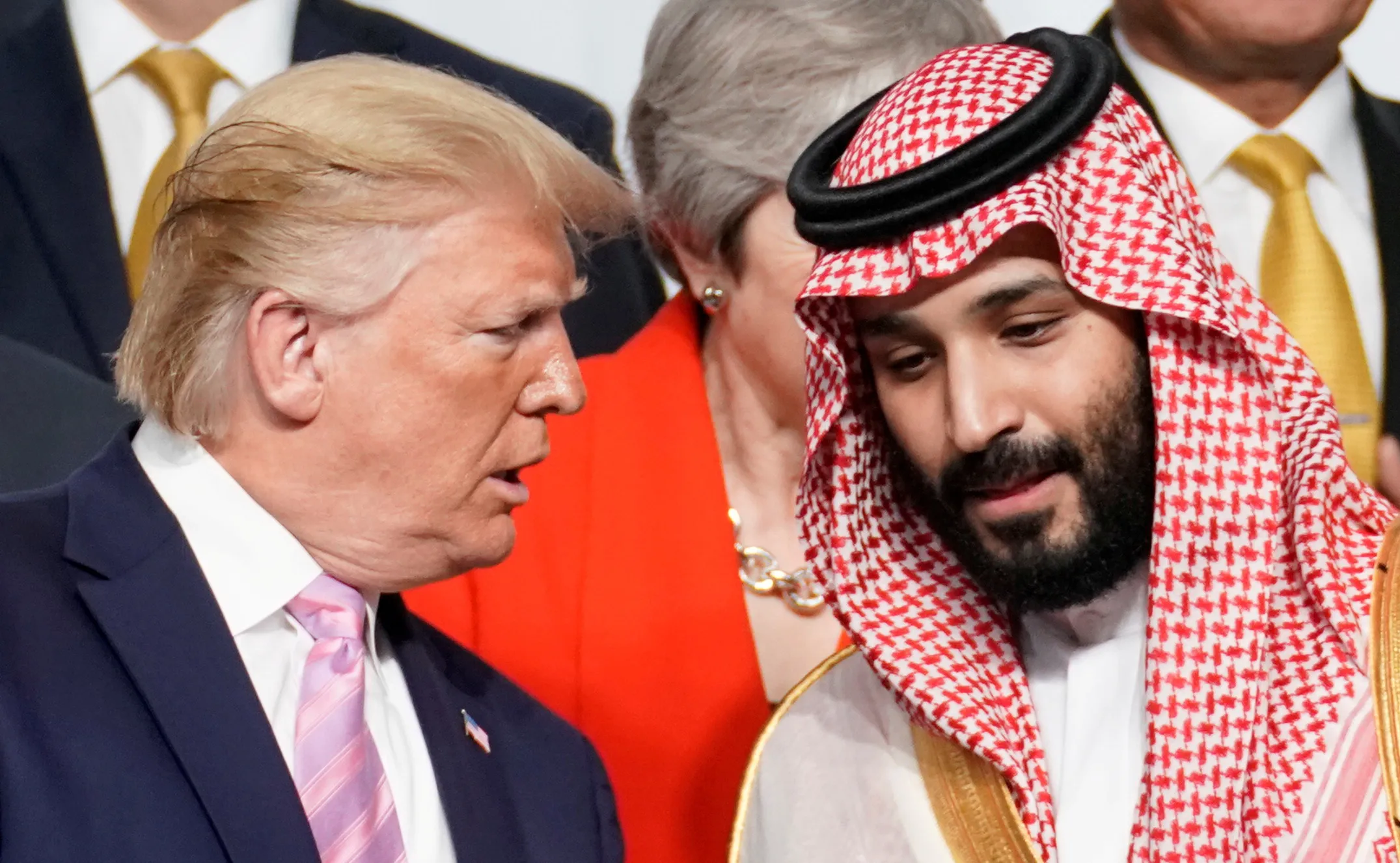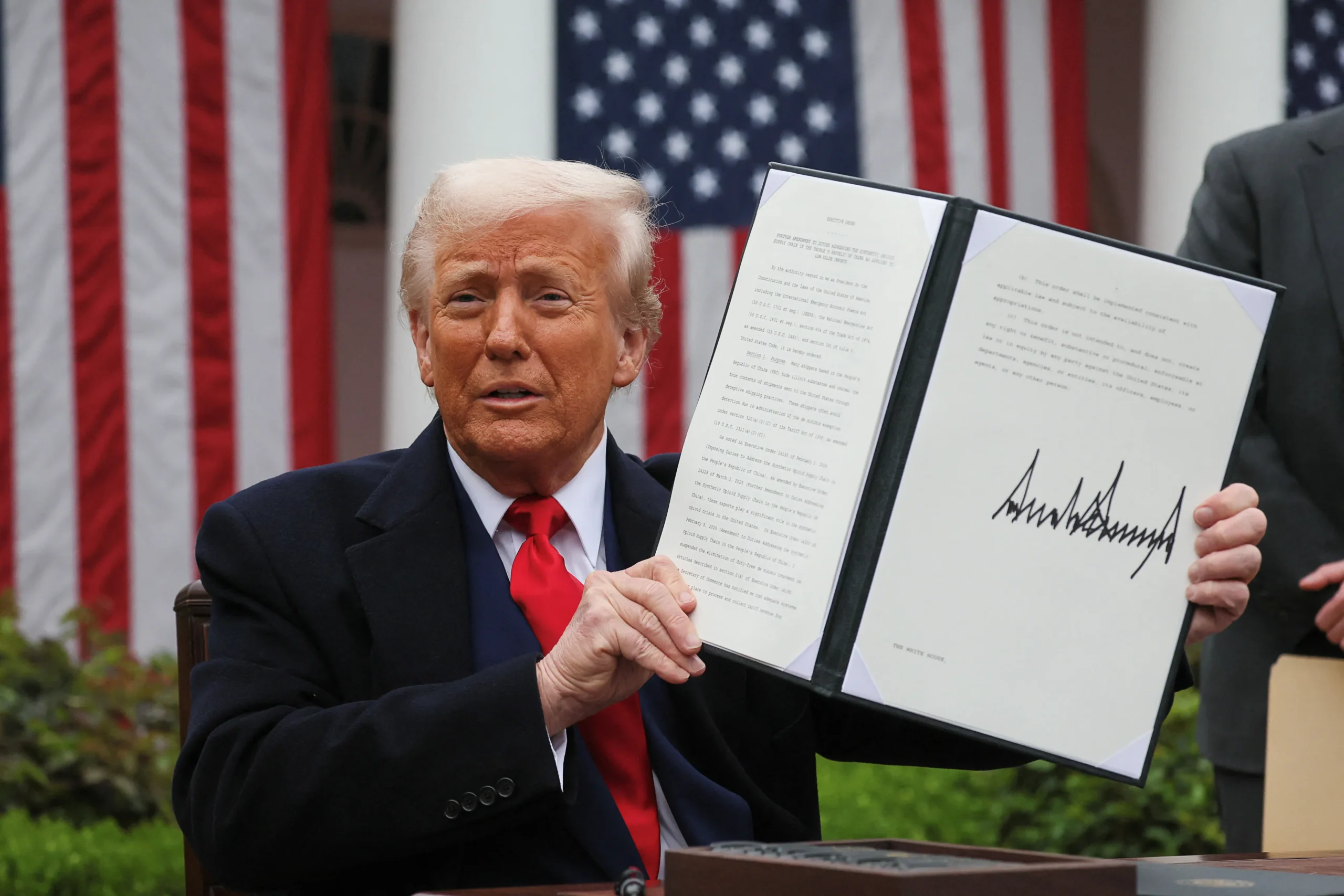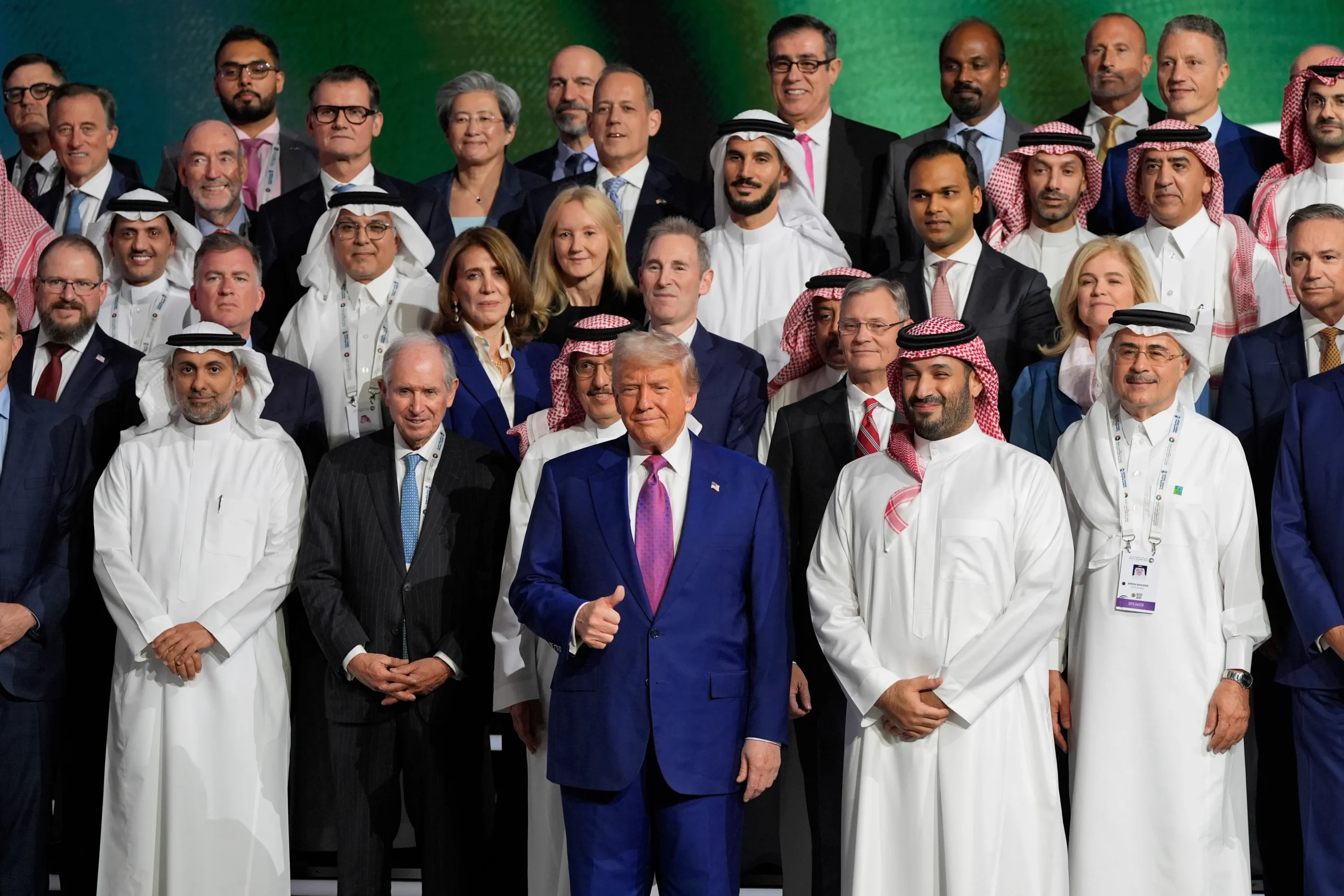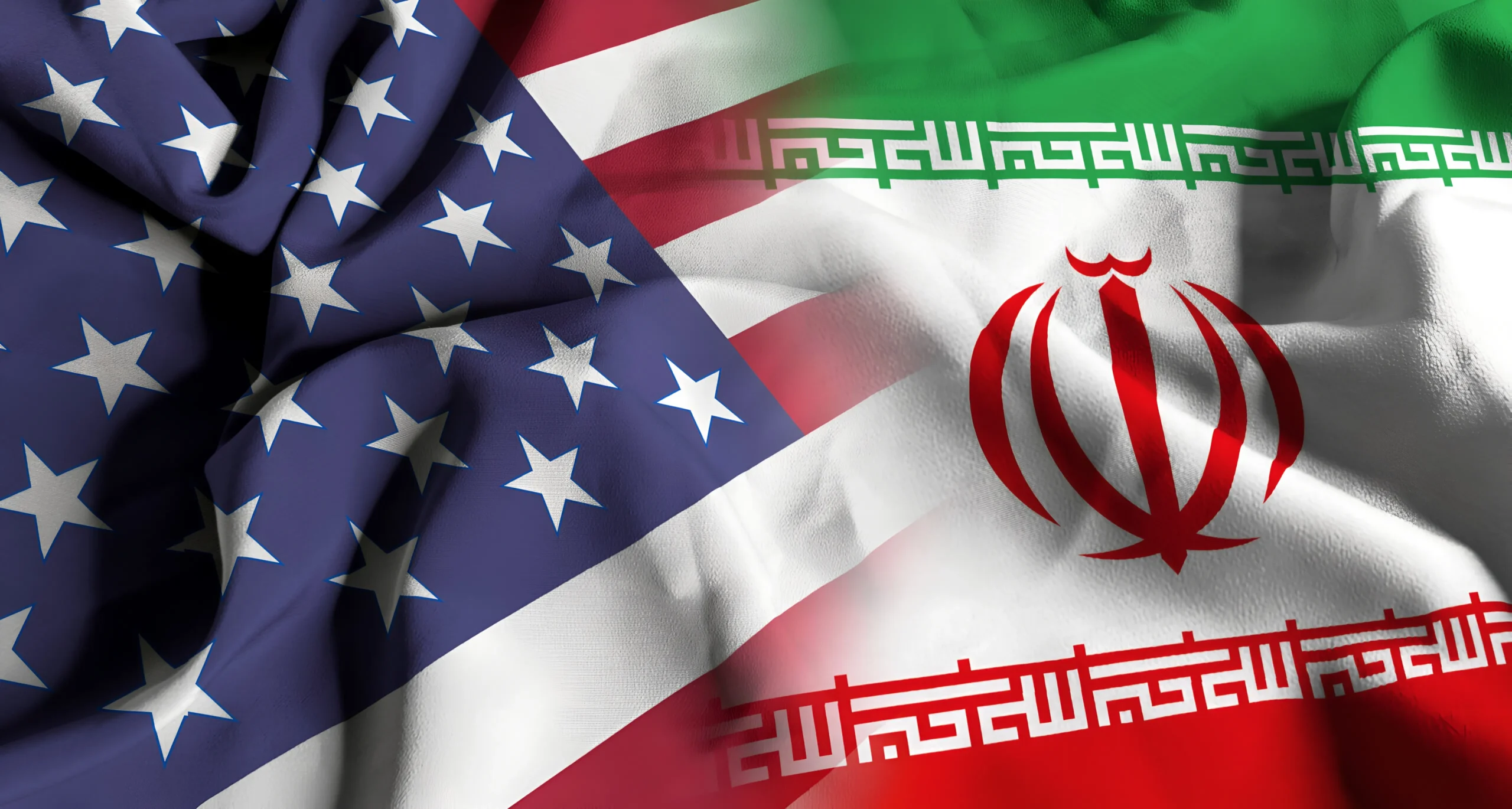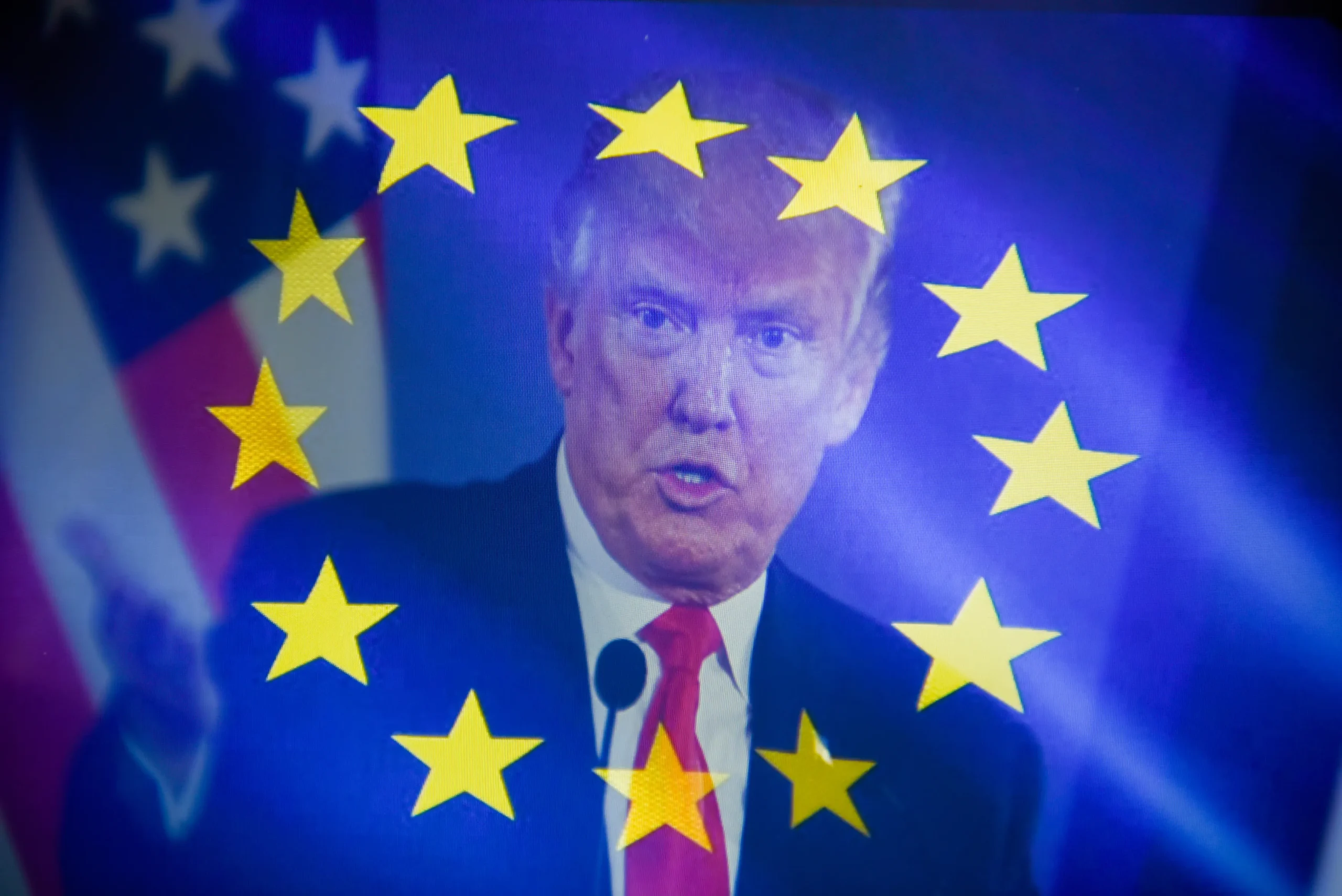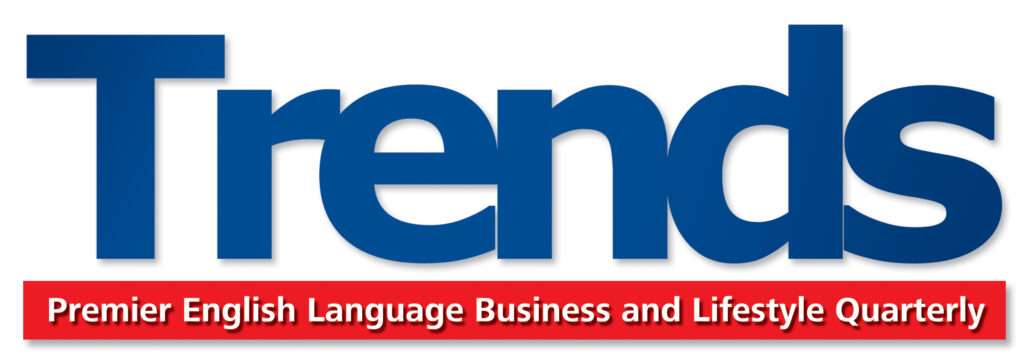
By: Arad Tadayon
Donald Trump’s second presidency, kicking off in January 2025, isn’t just another chapter—it’s a seismic shift shaking the foundations of global economies. With his dealmaker’s bravado, Trump has unleashed a whirlwind of tariffs, tax cuts, and a May 13–16, 2025, Middle East tour that’s got markets buzzing from Wall Street to Dubai’s gleaming towers. His audacious blend of economic nationalism and diplomatic high-wire acts, like brokering trillion-dollar Gulf deals and pivoting Syria’s future, is a gamble on America’s dominance. This sprawling analysis dives into the far-reaching impacts of Trump’s policies, from U.S. factory floors to Gulf oil fields, and zooms in on his Middle East venture, where he wooed Saudi Arabia, Qatar, the UAE, and Syria, while roping in Turkey’s Recep Tayyip Erdogan as a regional player. Can Trump’s bold vision reshape the world order? Let’s dig into the details.
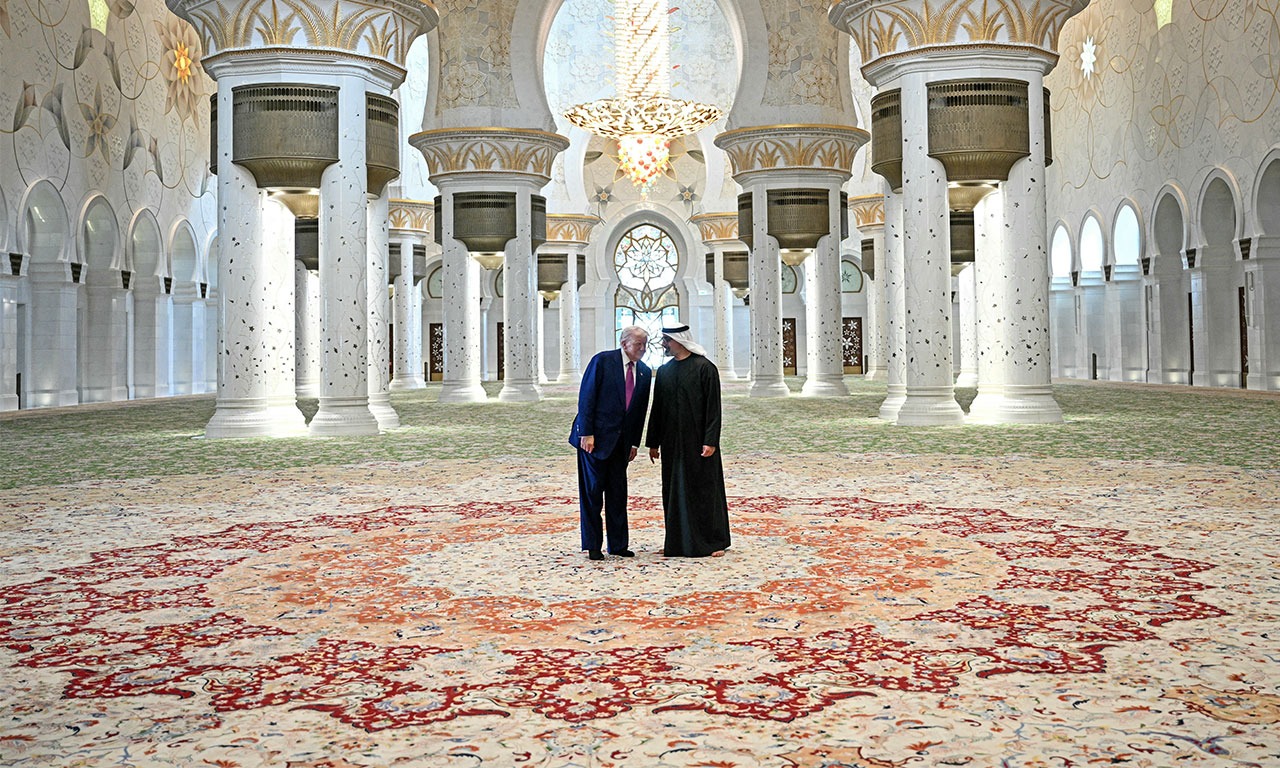
Trade Policy: Rewiring Global Commerce
Trump’s trade agenda, a pillar of “America First,” is redrawing the map of international commerce with a vengeance. In April 2025, he slapped a 25% tariff on autos and auto parts, alongside a proposed 10% levy on steel and aluminum, aiming to resurrect U.S. manufacturing. The Peterson Institute projects a 2–3% price hike for U.S. consumers, costing households ~$1100 annually, with supply chain disruptions looming. Yet Trump’s camp, waving a 2024 study, claims a 10% global tariff could pump $728 billion into GDP and create 2.8 million jobs. It’s a high-stakes bet: growth versus the specter of a trade war, with China, the EU, and Canada eyeing retaliatory tariffs.
The ripple effects of Trump’s tariffs extend to global investment flows, particularly in the Middle East, where Gulf states are recalibrating their portfolios. Trump’s tariff policy divided MENA countries into three categories: Gulf states, Egypt, Morocco, Lebanon, and Turkey faced 10% tariffs, while Algeria (30%), Libya (31%), Iraq (39%), and Syria (41%) received higher rates. This “divide and rule” strategy aims to pressure regional states into bilateral negotiations. For instance, Israel successfully negotiated its tariff rate down from 17% to 10%. Turkey, with its strategic trade routes, could gain as a logistics hub if Gulf states pivot, but Erdogan’s erratic policies—praised yet cautiously navigated by Trump in Riyadh—risk deterring capital. This investment shift underscores Trump’s ability to leverage trade policy for economic alliances, though global uncertainty could undermine these gains if not carefully managed.
Trump’s trade barriers also reshape global labor markets, with ripple effects on remittances critical to Middle Eastern economies. The UAE’s $200 billion AI deal, with its promise of tech jobs, could draw skilled workers from Egypt and Jordan, boosting regional economies but straining U.S. labor markets already hit by tariff costs. Turkey’s labor force, eyed for Gulf projects, faces challenges from domestic inflation, limiting its role despite Trump’s nod to Erdogan. The World Bank projects a 5% drop in remittances to developing nations if tariffs persist, potentially destabilizing economies reliant on migrant workers. Trump’s Middle East tour, by securing Gulf capital, aims to cushion these shocks, but the delicate balance of trade policy and labor dynamics will test his economic strategy’s resilience.
Impact on Emerging Markets
Emerging markets, like those in Southeast Asia and Latin America, face a squeeze from Trump’s tariffs. Countries reliant on U.S. imports, such as Mexico, could see export revenues drop, with Barclays estimating a 1.5% GDP hit for trade-dependent economies. The energy sector faces dual pressures: a 15% drop in oil prices due to reduced global demand from steel and aluminum tariffs, and intensified competition for U.S. renewable energy investments. Saudi Arabia, for example, signed a $20 billion deal with U.S. firms for solar power plants. Turkey could pivot as a manufacturing hub for Gulf states diversifying from China, but U.S.-Turkey trade frictions, including past steel tariffs, cloud this prospect. If emerging markets lean toward China’s Belt and Road to offset U.S. barriers, Trump’s Middle East alliances may counterbalance this shift.
E-Commerce and Supply Chain Disruptions
Trump’s scrapping of the $800 de minimis exemption for tariff-free imports has jolted e-commerce, hitting retailers dependent on Asian suppliers. This move, aimed at protecting U.S. producers, could raise prices for American shoppers, potentially offsetting Gulf investment gains. Supply chains, already strained by tariffs, face further stress, with the Council of Councils warning of a 20% cost increase for U.S. firms reliant on Chinese components. The Middle East tour’s UAE AI deal (5-gigawatt data center, 500,000 Nvidia chips) positions the Gulf as a tech supply hub, but higher costs could dampen its economic boost.
Fiscal Policy: Fueling Growth, Flirting with Debt
Trump’s fiscal playbook—extending the 2017 Tax Cuts and Jobs Act and pushing a corporate tax cut from 21% to 20%—is all about igniting U.S. growth. But with the national debt ballooning 33% in his first term and inflation at 3% in January 2025, critics question the math. The National Association for Business Economics found 84% of firms didn’t ramp up investment post-2017 cuts, yet Trump’s team insists new cuts will spark hiring. His Department of Government Efficiency (DOGE), led by Elon Musk, eyes federal agency downsizing, risking disruptions to payments and U.S. creditworthiness if courts greenlight it.
Trump’s fiscal maneuvers are stirring debates over income inequality, as tax cuts skew benefits toward corporations and high earners. The Center for American Progress estimates the top 1% could see after-tax income rise by 3%, while middle-class gains lag at 0.7%. The Middle East tour’s $600 billion Saudi investment, aimed at U.S. manufacturing, could create jobs in Rust Belt states, but without broader tax relief, working-class voters may feel sidelined. If inequality widens, political pushback could jeopardize Trump’s Gulf alliances, forcing a recalibration of his fiscal agenda.
The fiscal strategy’s reliance on Gulf capital also exposes vulnerabilities to geopolitical shifts. The UAE’s $440 billion energy pledge, part of the tour’s $2 trillion haul, hinges on stable U.S.-Gulf relations, but tensions over Trump’s Gaza “freedom zone” could erode trust. Turkey, with Erdogan’s growing Syrian influence, could broker Gulf investments if U.S. ties falter, but Ankara’s economic instability risks undermining this. The Congressional Budget Office warns that unchecked deficits could trigger a bond market sell-off, raising borrowing costs. Trump’s Middle East tour, by locking in Gulf funds, aims to shore up fiscal confidence, but navigating these geopolitical currents will be crucial to sustaining his economic vision.
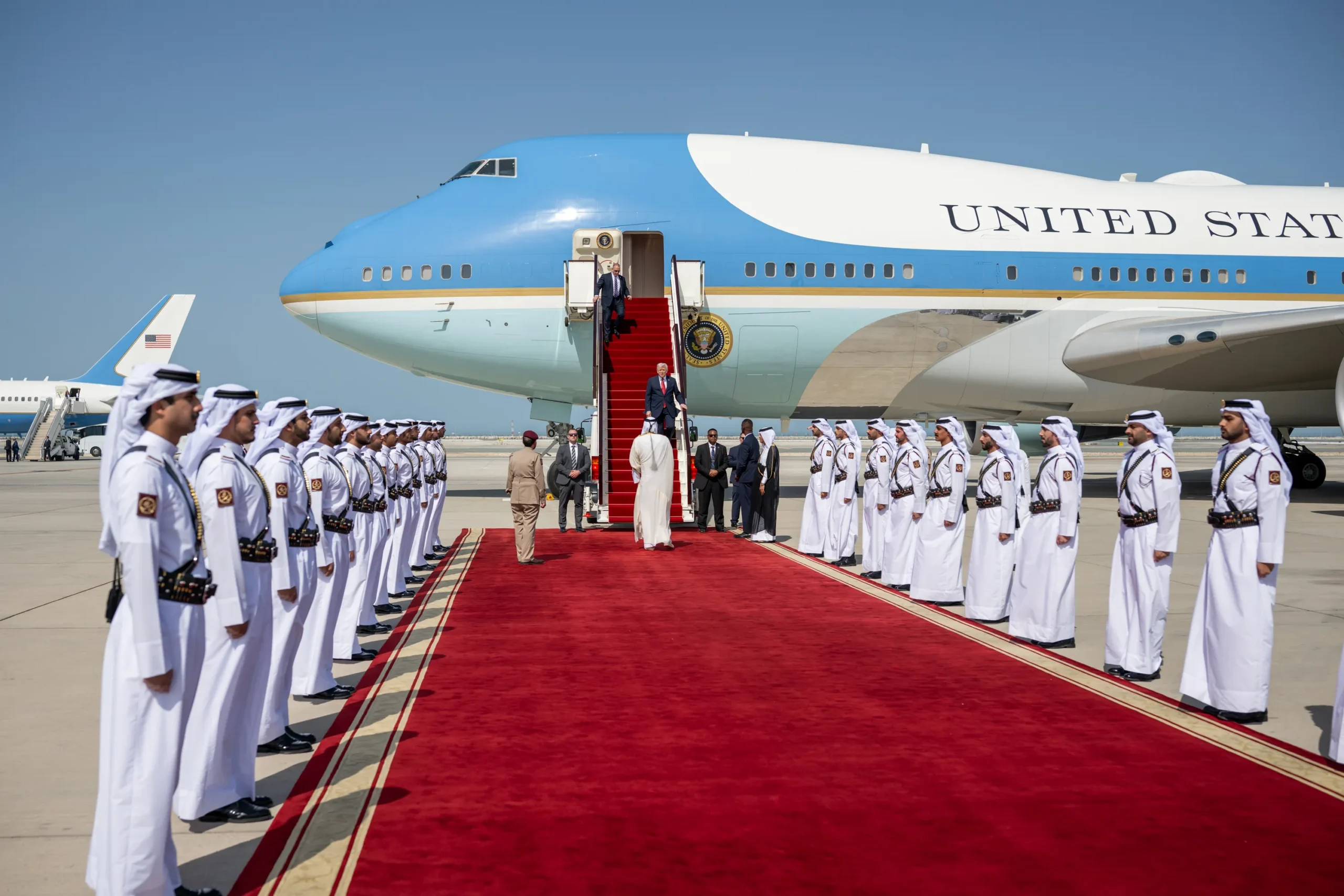
Federal Workforce and Regional Economies
DOGE’s plan to slash federal jobs could hit regions like Washington, D.C., hard, with ripple effects on local economies. The Brookings Institution estimates a 5% unemployment spike in D.C. if 50,000 jobs are cut, denting consumer spending. Trump’s policies, including tax cuts and military spending, pushed U.S. growth to 2.2% in 2025. However, core inflation rose to 3.1%, exceeding the Fed’s 2% target. Strict immigration policies caused a 4.2 million labor shortage in agriculture, construction, and services, raising wages by 15-20% but reducing productivity. Trump’s economic policies act as a double-edged sword: boosting U.S. growth while heightening global recession risks. In MENA, they have redefined security-economic ties, driving multilateralism. A potential Iran deal offers economic opportunities but requires institutional reforms to mitigate political risks. Ultimately, the world is undergoing a profound economic realignment whose consequences will outlast Trump’s presidency.
Debt and Market Confidence
The U.S. debt, projected to hit $35 trillion by 2026, looms large. Trump’s modest budget cuts and increased defense spending—up 10% in 2025—add pressure. Moody’s warns of a credit rating downgrade if deficits persist, which could spook markets. The tour’s $200 billion UAE pledge, including a $4 billion Oklahoma smelter, aims to bolster U.S. markets, but investor confidence hinges on fiscal stability. J.P. Morgan predicts Trump’s 34% tariffs on China and 20% on the EU could slash global growth to 1.7% in 2025. Simultaneous central bank rate hikes to combat inflation may exacerbate this trend. The “decouple from China” policy has redirected $350 billion in FDI to Vietnam, India, and Mexico, raising production costs by 8-12% but diversifying supply chains. Trump’s ability to balance debt with Gulf inflows will shape his economic legacy.
Energy Policy: Powering America, Shaking Markets
Trump’s drive to keep the U.S. as the world’s top petroleum producer, through expanded fossil fuel projects, has global markets on edge. Gulf allies like Saudi Arabia and the UAE, central to his May 2025 tour, thrive under his oil-friendly policies. But higher oil prices from U.S. production could strain import-reliant economies like Turkey, which Erdogan signaled interest in diversifying. The tour’s Houthi ceasefire, securing Red Sea trade, stabilizes Gulf exports but risks unraveling if tensions flare.
Trump’s energy policies are reshaping global commodity trade routes, with the Middle East at the epicenter. The UAE’s $440 billion energy investment, secured during the May 2025 tour, prioritizes U.S. LNG exports, redirecting Gulf trade toward American ports. Saudi Arabia’s $600 billion deal includes pipeline projects linking U.S. firms to Gulf markets, but higher oil prices could squeeze import-dependent nations. The Houthi ceasefire, a tour highlight, ensures Red Sea stability for now, but Iran’s potential resurgence could disrupt routes. Trump’s energy gambit strengthens U.S.-Gulf ties, but global trade volatility could test its durability if regional tensions flare.
The environmental fallout of Trump’s fossil fuel push is sparking global investor unease. The UAE’s AI data center, energy-hungry yet central to the tour’s $200 billion deal, highlights the tension between tech growth and sustainability. Turkey’s renewable ambitions, discussed with Trump, lack funding to compete, while Saudi Arabia’s green projects take a backseat to oil. The International Monetary Fund warns that Trump’s policies could divert $1 trillion from global clean energy by 2030, unsettling ESG-focused investors. The Middle East tour’s energy deals aim to anchor U.S. dominance, but balancing environmental concerns with economic gains will shape Trump’s global standing.
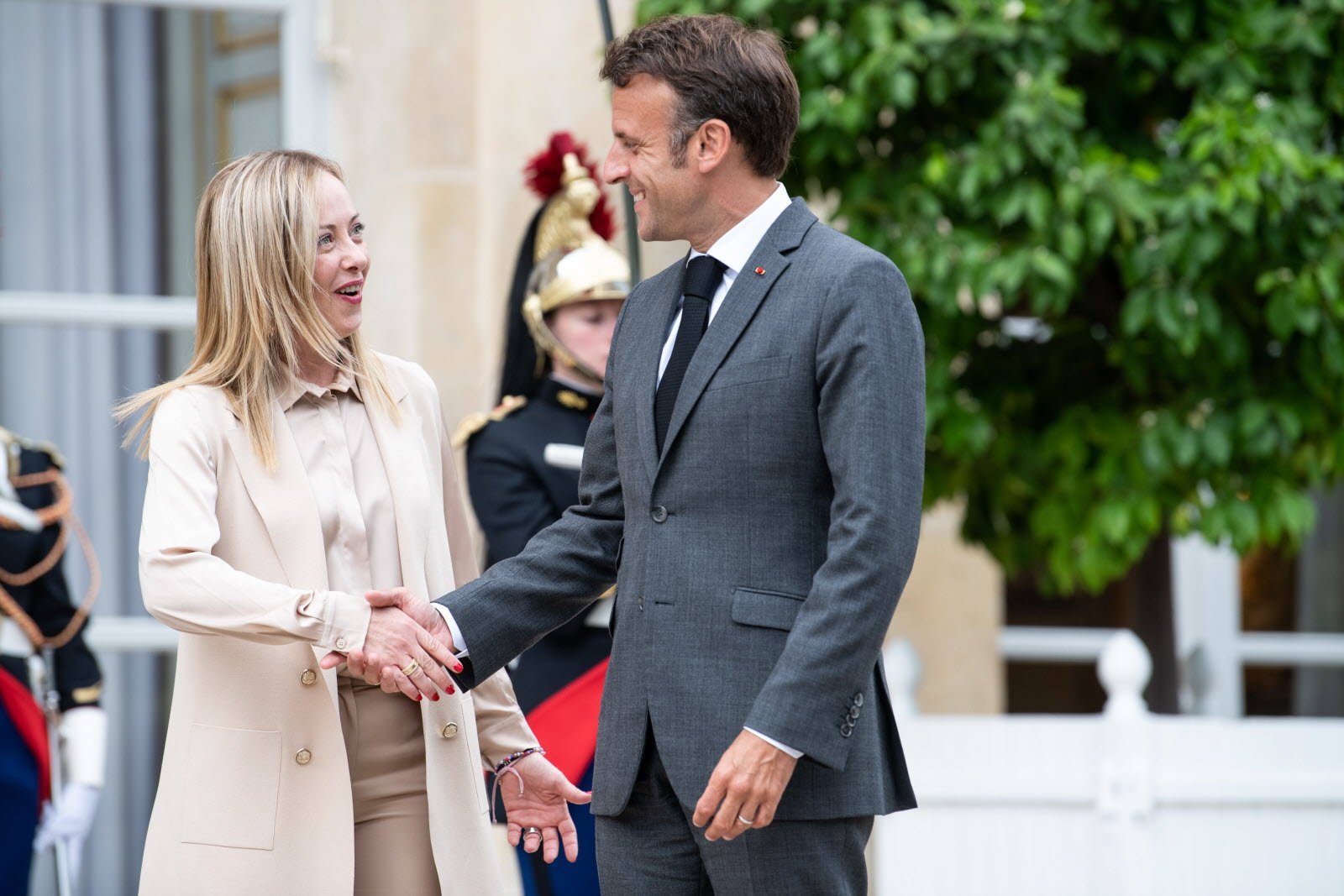
Renewable Energy and Climate Goals
Trump’s fossil fuel focus clashes with global green investment funds, potentially raising U.S. carbon emissions by 10% by 2030, per the International Energy Agency. This could alienate European markets prioritizing sustainability, with Barclays noting a 15% drop in green tech investments. The Middle East tour’s UAE AI deal, reliant on energy-intensive data centers, underscores this tension, though Gulf states’ renewable ambitions offer a counterpoint. Turkey’s push for solar and wind aligns with diversification but lacks the scale to offset U.S. policy impacts. If climate goals falter, global commodity markets may face volatility.
European Energy Dependence
Europe’s reliance on U.S. LNG, amid Russian supply cuts, grows under Trump’s policies, but tariffs could hike energy costs by 8%, per Oxford Economics. This squeezes European manufacturers, particularly in Germany’s automotive sector. The Middle East tour’s energy deals, tying Gulf oil to U.S. markets, aim to stabilize global prices, but Iran’s potential resurgence—linked to Oman talks—could disrupt this. Turkey’s role as a gas transit hub could ease European pressures if U.S.-Turkey ties strengthen, but political frictions remain a barrier.
Geopolitical Realignments: A New World Order
Trump’s transactional diplomacy, showcased in his Middle East tour, is reshaping regional and global alliances. The $2 trillion Gulf deals and Syrian sanctions lift signal a pivot from military to economic power. The UAE’s AI data center and Qatar’s $43 billion Boeing deal position the Gulf as a U.S. tech hub, but the Gaza “freedom zone” proposal has sparked Arab backlash, risking Gulf goodwill.
Trump’s geopolitical strategy is reshaping global alliances beyond the Middle East, with implications for economic stability. His tariffs and isolationist rhetoric have pushed allies like Japan and South Korea toward regional trade pacts, with the Asian Development Bank noting a 10% rise in intra-Asian trade. The Middle East tour’s Gulf deals aim to counter this, but alignment with Russia and China could complicate U.S. influence. If Gulf states hedge with Asian powers over Gaza tensions, Trump’s economic alliances may weaken, forcing a rethink of his geopolitical playbook.
The Middle East’s internal dynamics, amplified by Trump’s tour, add another layer of complexity. Syria’s sanctions lift, a tour centerpiece, opens reconstruction, but Turkey’s Kurdish opposition risks destabilizing the region. The UAE’s AI deal and Qatar’s pact rely on regional stability, but Iran’s Oman talks could shift power dynamics. Trump’s tour aimed to cement U.S. dominance, but navigating these fault lines—Syria, Gaza, and Turkey’s ambitions—will determine his geopolitical legacy.
China’s Counterstrategy
China, hit by Trump’s 40% tariffs, is doubling down on ASEAN trade and Belt and Road expansion, hosting import expos to lure Gulf states. The Middle East tour aims to counter this, but if Gaza tensions escalate, Beijing could gain ground. China’s growing influence in Tehran, tied to Iran’s Oman talks, further threatens U.S. dominance, making the tour’s alliances critical.
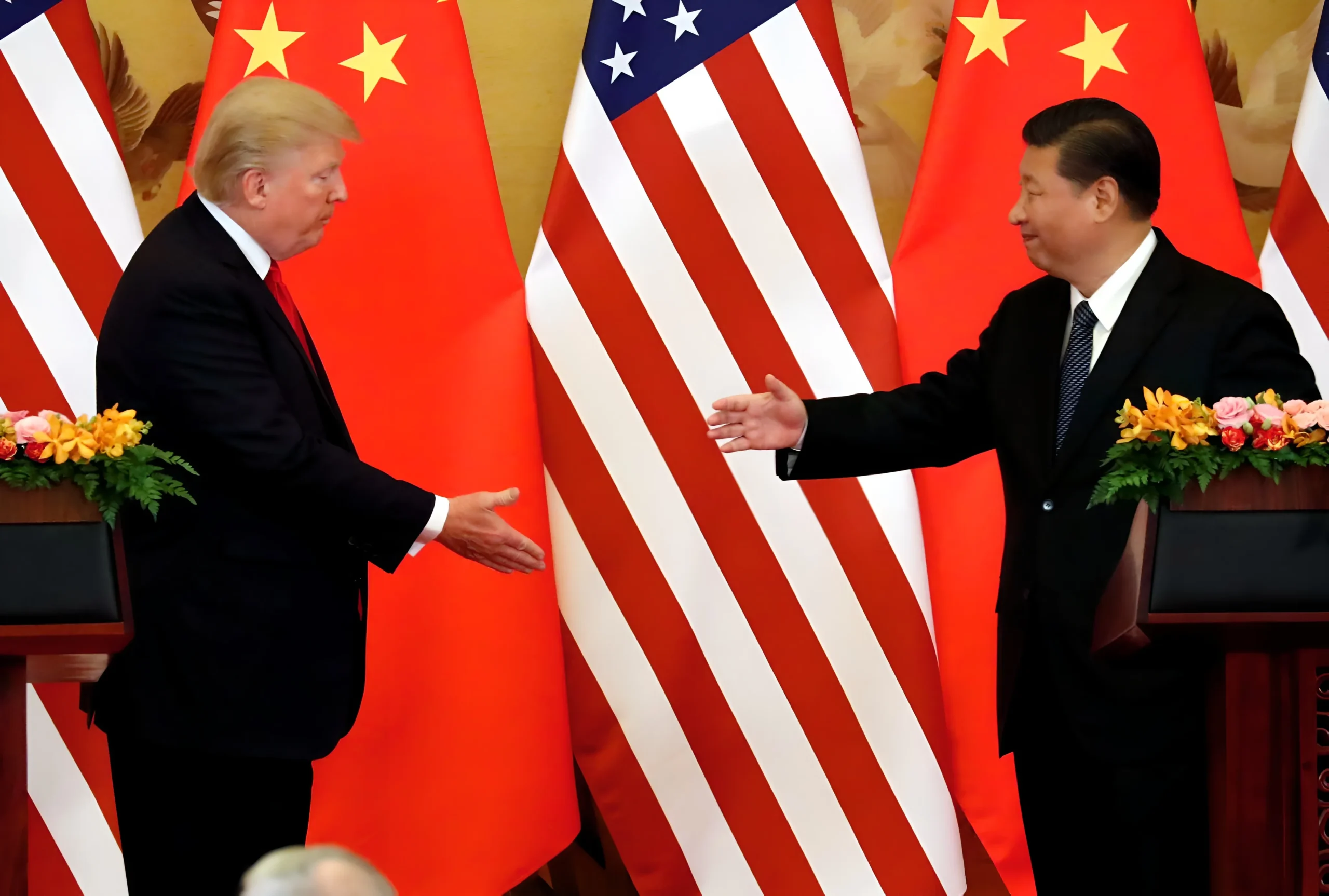
Transatlantic Tensions
Trump’s tariffs strain allies like Canada and Mexico, with Canada eyeing trade diversification. The EU, facing 10% U.S. tariffs, may retaliate, impacting $500 billion in transatlantic trade, per Reuters. The Middle East tour’s Syrian pivot, aligning with al-Sharaa, opens reconstruction but faces Kurdish tensions, which Turkey opposes. Erdogan’s Syrian role could stabilize or destabilize, depending on U.S.-Turkey coordination. If transatlantic ties fray, Gulf deals may not suffice to anchor U.S. influence, testing Trump’s geopolitical gambit.
The Middle East Tour: A Case Study in Economic Diplomacy
Trump’s May 2025 Middle East tour—Saudi Arabia, Qatar, UAE, and Syria—was a masterclass in economic ambition. In Riyadh, he secured a $600 billion deal, eyeing Saudi nuclear prospects, but hit a snag on Israel normalization without a Palestinian state. Qatar’s $1.2 trillion pact and $43 billion Boeing deal solidified its mediator role, while the UAE’s $200 billion, including a 5-gigawatt AI data center, 500,000 Nvidia chips, $14.5 billion Boeing, and $4 billion Oklahoma smelter, showcased tech prowess. Syria’s sanctions lift and Kurdish integration deal opened reconstruction, though Turkey’s Kurdish concerns, voiced in Trump’s May 14 Erdogan praise, add risks.
The tour’s Houthi ceasefire stabilized Red Sea trade, but Gaza’s backlash and Iran’s Oman talks highlight fragility. Turkey’s wildcard role, from Syria to Gaza, could bolster or disrupt Trump’s plans, depending on Erdogan’s moves. These $2 trillion deals aim to anchor U.S. growth, tying Gulf wealth to American innovation, but navigating the region’s fault lines—Gaza, Iran, and Turkey’s ambitions—will test Trump’s diplomatic mettle.
The Middle East tour’s economic deals are a blueprint for Trump’s vision of U.S.-led global commerce, but they face domestic political hurdles. The $600 billion Saudi deal, targeting U.S. infrastructure, has sparked Congressional pushback over reliance on autocratic regimes, per a May 2025 Senate report. Qatar’s $43 billion Boeing deal boosts U.S. jobs, but labor unions demand assurances against outsourcing. Turkey’s role, with Erdogan’s Syrian influence, could see Turkish firms bid for reconstruction contracts, but U.S. sanctions risks linger. If domestic opposition grows, Trump’s tour gains could face scrutiny, testing his ability to sell Gulf partnerships at home.
The tour’s diplomatic fallout, particularly over Gaza, threatens its economic promise. The “freedom zone” proposal, panned by Arab states, has strained Saudi and UAE relations, potentially jeopardizing the $2 trillion in deals. Turkey’s Erdogan, leveraging his anti-Israel stance, could rally Arab support, complicating Trump’s Israel normalization push. The Houthi ceasefire and Syria’s pivot hinge on regional calm, but Iran’s defiance in Oman talks adds uncertainty. Trump’s tour showcased his dealmaking prowess, but sustaining these gains amid Middle East volatility will demand diplomatic finesse.
Conclusion: A Legacy in the Balance
Trump’s second presidency is a high-wire act of economic bravado and diplomatic daring. Tariffs and tax cuts promise U.S. growth but risk trade wars and debt. Gulf deals and Syrian pivots offset domestic pressures, but Gaza looms as a threat. Turkey’s rising influence, from Riyadh to Damascus, adds intrigue, balancing opportunity with tension. The Middle East tour, with its trillion-dollar stakes, is a microcosm of Trump’s vision: a world where U.S. power thrives on commerce, not conflict. Yet, as markets quiver and alliances shift, his legacy hangs on a delicate balance. Can he navigate the Middle East’s currents and deliver global stability? The world’s watching, and the stakes couldn’t be higher.


